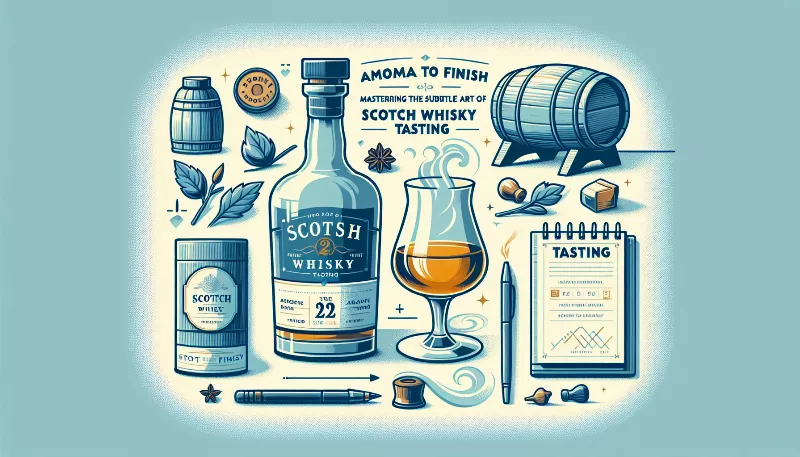Can you identify a Scotch whisky's region of origin based on its flavor profile?
Unlock the secrets of Scotch whisky flavors and learn to pinpoint their regions of origin. Taste the nuances of Scotland in every sip!

Embark on a Flavorful Journey Through Scotland's Whisky Regions
Are you ready to become a whisky connoisseur, capable of discerning the lush landscapes of Scotland with nothing but your palate? The world of Scotch whisky is rich and diverse, with each region imparting its own unique characteristics to the spirits that slumber within its borders. Let's take an olfactory odyssey through the rolling hills and rugged coasts of Scotland to discover if you can truly identify a Scotch whisky's region of origin based on its flavor profile!
The Peaty Punch of Islay
Our first stop is the windswept isle of Islay, renowned for its peat-laden whiskies that evoke images of smoky hearths and stormy seas. Islay malts are famous for their robust peat smoke and maritime qualities. Notes of seaweed, brine, and sometimes a medicinal quality reminiscent of iodine are telltale signs you're sipping on an Islay dram. If your whisky tastes like a bonfire on the beach, chances are it hails from this rugged island.
The Highland Harmony
Next, we venture into the vast expanse of the Highlands, where the flavor profiles are as varied as the landscape itself. Highland whiskies can range from light and floral, akin to a spring meadow, to rich and full-bodied with hints of dried fruit and spice. Some Highland distilleries also produce peated expressions, adding another layer of complexity. A dram with a harmonious balance of sweetness, fruit, and a hint of peat might just have its roots in the Highland soil.
The Speyside Symphony
Speyside, often considered the heartland of Scotch whisky, is home to the highest concentration of distilleries in Scotland. Speyside whiskies are celebrated for their elegance and complexity. They often boast flavors of ripe orchard fruits, vanilla, and honey, with a smooth and mellow finish. If you detect a symphony of sweet and rich malty tones dancing on your tongue, you're likely enjoying a Speyside treasure.
The Maritime Malt of Campbeltown
Once a thriving hub of whisky production, Campbeltown now stands as a small, yet significant, bastion of Scotch whisky. These malts are known for their briny character, with a slight peatiness and notes of dried fruit and toffee. A whisky that whispers of the sea with a slightly oily texture and a complex, dry finish could very well be a product of Campbeltown's historic stills.
The Lowland Lilt
Gracefully rounding off our tour, we arrive in the Lowlands, where the whiskies are typically lighter and gentler. Lowland drams often present fresh, floral notes, with a clean, crisp finish. They may also carry a citrusy zest or a grassy freshness. If your whisky feels like a breath of fresh air with a delicate touch, it's likely born in the gentle embrace of the Lowland hills.
Conclusion: The Art of Regional Recognition
In conclusion, while there is no one-size-fits-all rule due to the individuality of each distillery, regional characteristics often shine through in a Scotch whisky's flavor profile. By paying attention to the nuances of peat, fruit, sweetness, and maritime influences, you can begin to guess at a whisky's region of origin. So pour yourself a dram, engage your senses, and let the spirit of Scotland guide you through its geographical tapestry of taste. Slàinte mhath!










